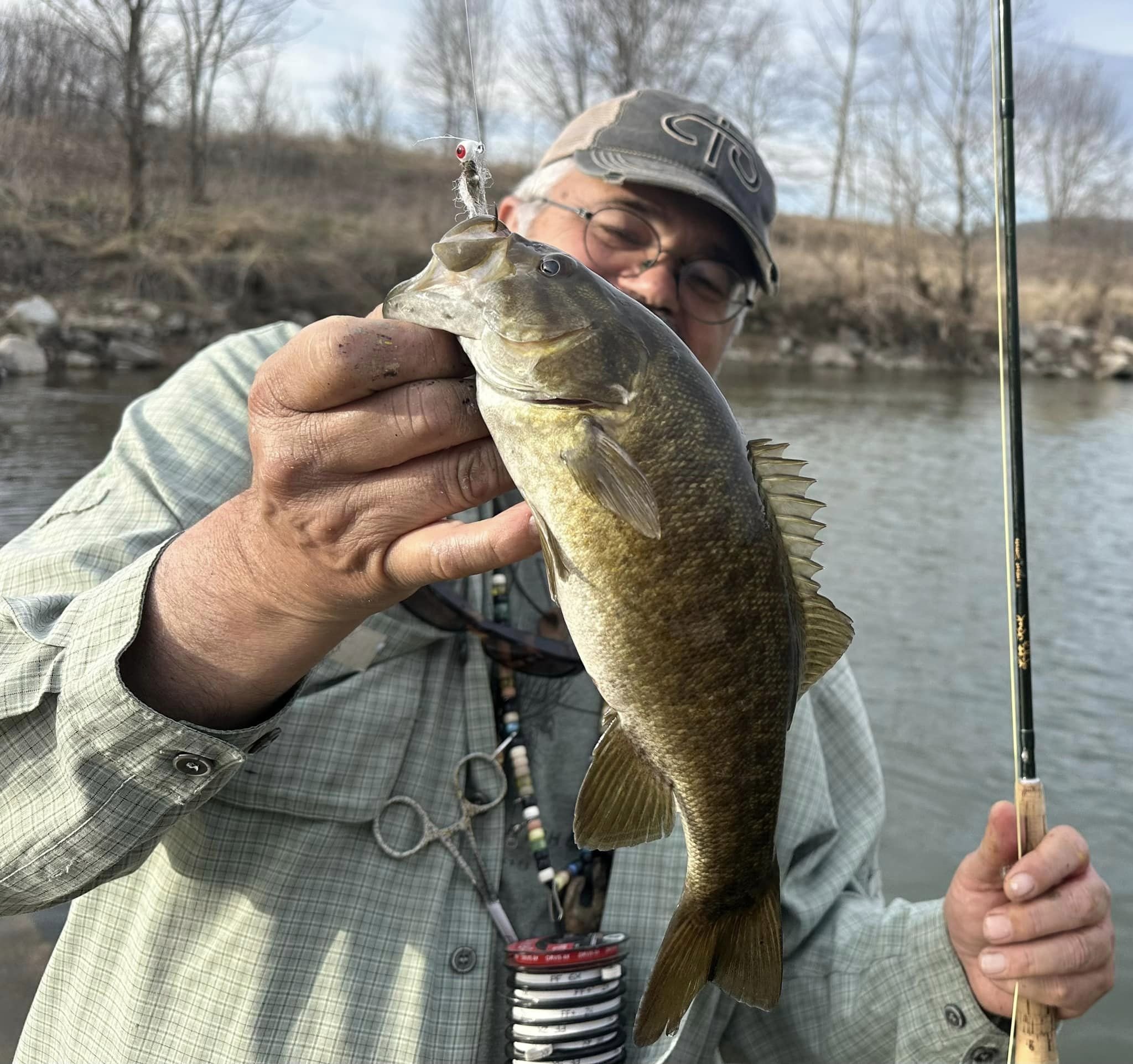Unique Ozark & Ouachita Smallmouth Bass Were in Danger. Here's How Duane Hada Stepped up to Help Save Them & You Can Too!
The Arkansas Game and Fish Commission knew it was time to begin the decades-long process of replenishing smallmouth bass in Arkansas streams.
In 1994, AGFC recruited Duane Hada, and a few other smallmouth enthusiasts of the region, to the Smallmouth Bass Taskforce. This task force was dedicated to the next 5 years of gathering information on the condition of smallmouth waters across the Ozark & Ouachita Mountain regions.
Arkansas is unique and blessed with an abundance of beautiful high-quality streams throughout the Ouachita and Ozark region that are home to 2 distinct, native subspecies of smallmouth bass: the Neosho strain in the Ozarks and the Ouachita strain in the western & southern mountain region.
As a lifetime angler & smallmouth bass lover, Duane knew our streams lacked up-to-date regulation and that our waters were suffering becasue of it. So he jumped at this opportunity to help.
The taskforce set out at a time when gravel mining and stream habitat destruction was at an all-time high. Arkansas anglers were losing quality smallmouth habitat at an alarming rate. Smallmouth bass require unique environments for their thriving, and that was sorely neglected due to unawareness and prolonged habitat destruction through gravel mining and over harvesting. Smallmouth were being over-harvested at such a high rate they were was close to being endangered. And the overall angling experinece of smallmouth had decreased.
In streams where it was once common to catch 100+ fish a day, it was now the norm for anglers to report 20-30 fish-catch days. They also found that the overall size of harvest fish had dropped drastically.
So the Smallmouth Bass Taskforce set out to research and bgin repairing Ozark streams. Duane personally collected samples and data work on 88 streams in the Ozarks and the Ouachita Mountains. All of his research was directed by Otto Fagian, the famed smallmouth biologist who had previously done studies & fieldwork for Missouri streams with their Department of Natural Resources.
Duane and the task force sampled streams with electroshock surveys to determine population density. They also selected otolith samples to determine smallmouth age growth rates. Additionally, they conducted thousands of angler surveys to get a clear picture of what anglers expected and wanted to see in the smallmouth stream management plan.
Through their research, the Taskfroce discovered that wild smallmouth have very slow growth rates. The state-wide average is 6 years to grow a 12 inch fish, although in some streams the growth rate is even slower than that! They also found that smallmouth bass could live a surprisingly long time, with fish documented at 16 years of age and older.
All of this information culminated in the designation of 15 Blue Ribbon streams across Arkansas. These streams are extraordinary resource waterways and are placed under regulation regarding smallmouth bass harvest. Additionally, with the information from angler surveys, they concluded that the smallmouth bass fishing experience in streams is a very fragile and unique fishery that can only be sustained with limited-to-no harvest.
Duane personally champions the practice of catch and release sport fishing only, eliminating all harvest of smallmouth. This is the only way anglers can have a profound impact on the smallmouth population, sustaining a quality fishery and holding on to the critical habitat we still have.
What kind of improvement have we seen since that early endeavor of the Smallmouth Bass Taskfroce? It’s difficult to see a fast turnaround in smallmouth stream management because these fish grow so slowly. Each fish counts and the only way we will see improvement is through the practice of catch and release, which has grown in popularity among anglers, thank goodness.
It’s an ongoing and slow process of restoration for the smallmouth bass habitat. But the beauty of it is that we are not losing ground! We are actively maintaining the health of these blue ribbon streams and providing smallmouth with a place to thrive now and in the future.
And every once in a while we get to hold one of these magnificent fighter fish. In fact, in partnership with Ozark Waters Fly Fishing, Duane leads guided, educational trips on a Smallmouth Bass Tour each year to share the excitement and fun of angling smallmouth while being champions of conservation.
Duane with his all-time personal best smallmouth catch: 19.75” caught on the Buffalo River.
Have you caught a trophy smallmouth, released it back into its wild waters, and sill wished you could somehow preserve the memory? Fish Replicas are a conservation-minded way for you to do just that! If you’ve got photos of your awesome catch, just send them to Duane and he can make an exact replica of your fish. Get Started Here.



